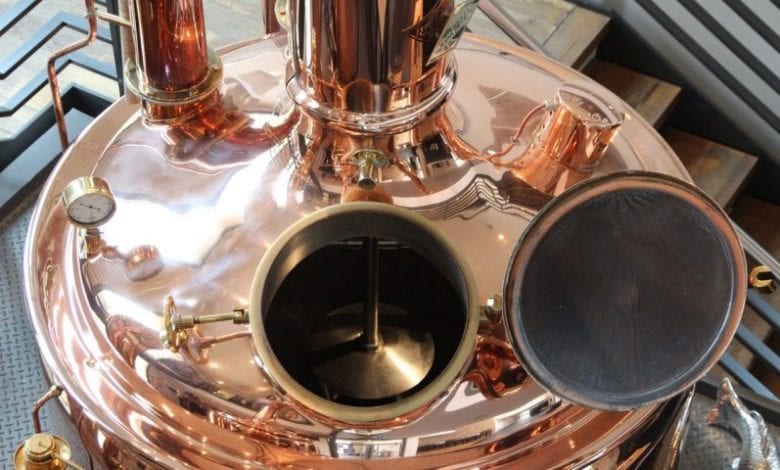How to start a microbrewery

Register to get 1 free article
Reveal the article below by registering for our email newsletter.
Want unlimited access? View Plans
Already have an account? Sign in
In the UK, the drinks market is in the middle of a huge craft beer boom. Across the nation microbreweries are seeking to champion their own exquisite flavours and brewing processes.
Anything from tart ‘sours’ to ‘coffee porters’ has led the craft beer movement to having a huge boost in sales and growth in recent years. In fact, 6.5% of all beer sales in the UK are currently attributed to the sector.
There are over 2,000 microbreweries now in production in the UK and the craft beer scene isn’t showing any glimpses of slowing down just yet. But when it comes to creating quality over quantity, there’s no mistaking that running a microbrewery can be an incredibly energy-intensive process.
A huge challenge faced by those who want to produce their own artisan beer is their choice of energy supply and how to best keep costs to a minimum. Here, Flogas, who supply gas cylinders, have some words of wisdom for those looking to kick-start their own successful brewery.
Equipment is key
If you’re not making a profit, your dreams will come crashing down, no matter how passionate you may be about brewing your own beer. One way to ensure this doesn’t happen is to choose an energy strategy that will reduce your usage and keep costs down. Microbreweries can be notoriously difficult to get off the ground financially, so by doing this, you can help boost your company’s profit margins.
Make sure the first thing you do is choose the correct equipment to get you up and running. One of the main components in the brewing process is the mash system, which is commonly made up of the following:
- Mash tank – Steeps barley into hot water and converts grain starches into fermentable sugars
- Lauter tun – Separates the wort (or liquid) from the solids of the mash (much like a sieve)
- Steam generator – Heats the kettle, which is then brought to a controlled temperature before the hops are added
- Malt mill – Crushes the grain in preparation for brewing
- Wort Pump – Re-circulates the mash for a higher efficiency, enhancing the clarity and quality of the brew
- Plate Heat Exchanger/Wort Chiller – Quickly cools the hot wort ready for fermentation
This will see the mashing stage covered. Further to this, you’ll need a fermentation system (where yeast is added and sugar turns into alcohol), a cooling system (to prevent bacteria growth and where beer can be stored ready for sale), a filtering system (to get rid of sediment for a higher-quality product) and, of course, not forgetting the sterilisation equipment (to ensure that bacteria doesn’t spoil your next batch of beer).
The proof is in the hops
Choosing your ingredients will also dramatically impact your beer’s flavour and consistency. With so many variations available, the possibilities are endless when it comes to creating something truly unique. But not matter how distinctive the taste, you’ll find all craft beer is made up the following key components:
Water – It may sound obvious, but water makes up around 90 percent of any beer.
The pH and mineral content of your chosen water, as well as if it’s hard or soft, can also affect the end result.
Barley – Barley plays a key role in the alcohol percentage of your beer and can dramatically affect the body, taste and aroma of your finished product.
Hops – Ever wondered where your favourite beer gets its distinctive flavour? Chances are it’s the hops. There are around 170 variations, meaning there’s plenty of choice when it comes to playing with flavour.
Yeast – An invisible but key ingredient to any good beer – yeast has been used in beer brewing for centuries. Essentially a fungus, yeast eats the sugars created in the malting process. By allowing it to ferment and feed off the sugars, alcohol is created as a byproduct.
Powering your microbrewery
Launching your own microbrewery certainly isn’t something you should take lightly. It’s definitely no easy feat. Along with all the complications of the brewing process, the last thing you’ll want to worry about is extortionate energy prices, or an unreliable supply. Whether you’re connected to the grid and need a highly competitive deal, or you’re operating in a rural location and you’re looking for a dependable supply, make sure you choose wisely.
If you are thinking of choosing LPG, (and are currently using oil or solid fuels), it’s worth knowing that LPG is a cleaner, cheaper and more efficient fuel – one that could bring you major savings on your energy costs. With the lowest CO2 emissions of any fossil fuel, it’ll also mean a lower carbon footprint for your microbrewery.







